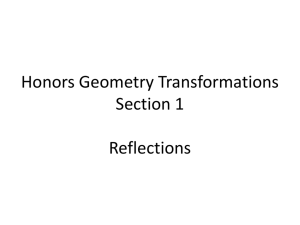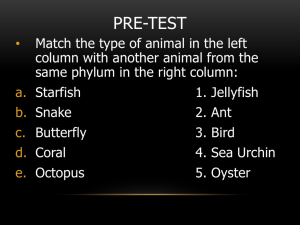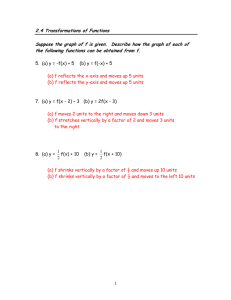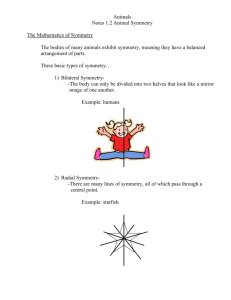Lesson 1: Line Symmetry and Reflections
advertisement
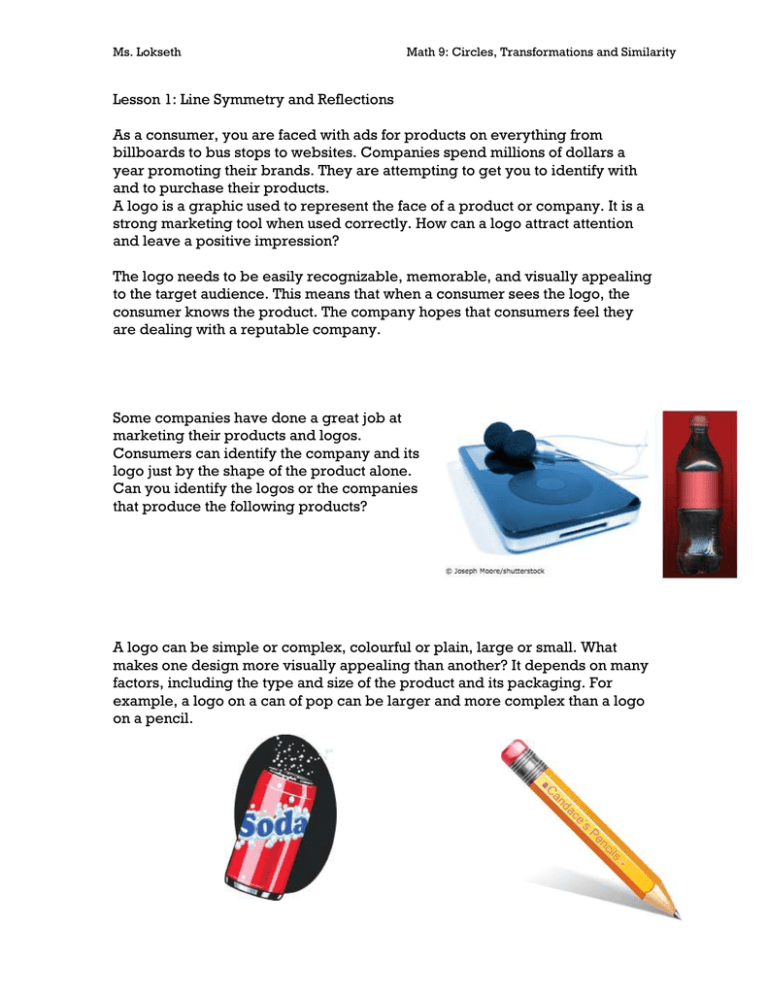
Ms. Lokseth Math 9: Circles, Transformations and Similarity Lesson 1: Line Symmetry and Reflections As a consumer, you are faced with ads for products on everything from billboards to bus stops to websites. Companies spend millions of dollars a year promoting their brands. They are attempting to get you to identify with and to purchase their products. A logo is a graphic used to represent the face of a product or company. It is a strong marketing tool when used correctly. How can a logo attract attention and leave a positive impression? The logo needs to be easily recognizable, memorable, and visually appealing to the target audience. This means that when a consumer sees the logo, the consumer knows the product. The company hopes that consumers feel they are dealing with a reputable company. Some companies have done a great job at marketing their products and logos. Consumers can identify the company and its logo just by the shape of the product alone. Can you identify the logos or the companies that produce the following products? A logo can be simple or complex, colourful or plain, large or small. What makes one design more visually appealing than another? It depends on many factors, including the type and size of the product and its packaging. For example, a logo on a can of pop can be larger and more complex than a logo on a pencil. Ms. Lokseth Math 9: Circles, Transformations and Similarity Regardless of its use, all logos have a common goal. They need to be memorable and catch your attention. Their owners want you as a consumer to identify with their product. In this lesson you will investigate one strategy used for creating easily recognizable, visually appealing designs. Explore A well-designed logo is easily recognizable attracts attention allows consumers to quickly identify with a product or company A visually appealing logo shows balance and symmetry. It can be clearly identified almost anywhere. A design that is too cluttered or not clearly visible does not connect well with the consumer. The following three milk containers illustrate good, poor, and bad designs. The first container shows a symmetrical cow that is proportionally sized and placed in the centre of the container. The cow is clearly visible and centred. This allows the consumer to identify the product quickly. This logo uses a balanced, uncluttered design. The middle container uses the same cow logo. It is substantially smaller and placed in the corner of the milk jug. There is a lot of unused packaging space. This arrangement does not clearly show the consumer what the product is. It isn’t a balanced design. Ms. Lokseth Math 9: Circles, Transformations and Similarity The third milk jug has the cow’s face completely surrounded by other text and pictures. The logo is hidden from view and is the same size as on the first container. The cluttered background means that the cow’s face is not clearly visible to the consumer. Which product do you think a consumer will choose? Chances are the consumer is going to purchase a product that can be quickly located on the store shelf. Your unit project will include creating a logo of your own. This piece of art was created by Cree elder Sally Milne. It was made by biting designs into birch bark. What reflections and rotations do you see in it? Reflections on our World Symmetry is related to motion geometry and transformations. Many of the images in our world show translations, reflections or rotations. In fact, some scientists believe that the human mind uses transformations to help visualize the world around us. 1. A line that divides an object or image into two identical halves is called a ________________________________. How many lines of reflections are there in the following images? Describe them Ms. Lokseth Math 9: Circles, Transformations and Similarity 2. In the following figure the line of reflection is represented by a dashed line, labeled r. Describe the reflected image. 3. Examine the figure. a) Figure ABC has been translated to create image A’B’C’. What rule could describe the translation? b) How many ways can we describe translations? (ie. Words, symbols) c) Describe a translation that would place the image for ABC in quadrant III. Note to self: What are the 4 quadrants on this grid? A transformation moves a geometric figure. Examples: translations, reflections and rotations. A translation: slides an image along a straight line. Ways of describing: Words – 3 units right and 2 down Abbreviations – 3R and 2D Symbols Mapping notation: (x,y) (x + 3, y – 2) Ms. Lokseth Math 9: Circles, Transformations and Similarity Animations: Butterfly animation Letter H animation What do you notice about shapes that have symmetry? Goldfish Animation Ring of pencils animation Letter L animation Connect Objects can be folded or reflected onto themselves to produce a mirror image. Asymmetrical objects produce figures that do not exactly match up. An image that gives two identical halves when it is reflected on itself is said to have line symmetry. The fold line that divides the object into the two mirror images is called the line of symmetry. Objects can have one line of symmetry, many lines of symmetry, or no line of symmetry. line symmetry: the term that describes when an object produces two identical halves when it is reflected onto itself line of symmetry: a line about which a figure is symmetrical If a figure can be folded such that the two parts exactly match, the fold line would be a line of symmetry. The identical halves can be produced by vertical, horizontal, or oblique (slanted) lines of symmetry. Example 1: Find lines of symmetry Each of the following demonstrates line symmetry. State the number of lines of symmetry and describe each one. a) b) Ms. Lokseth Math 9: Circles, Transformations and Similarity c) Show you know How many lines of symmetry are possible for each figure? Describe each line of symmetry as being vertical, horizontal or oblique (diagonal) Example 2: Complete drawings using symmetry Each drawing shows half of a figure. The dashed brown line represents a line of symmetry for the figure. Draw a complete version of each figure. Ms. Lokseth Math 9: Circles, Transformations and Similarity Show you know Copy each shape. Use the line of symmetry and a method of your choice to complete each shape. Complete Lesson 1 Exit Card – Hand in before you begin the assignment (complete what you can) Related Text Questions: Pg.



